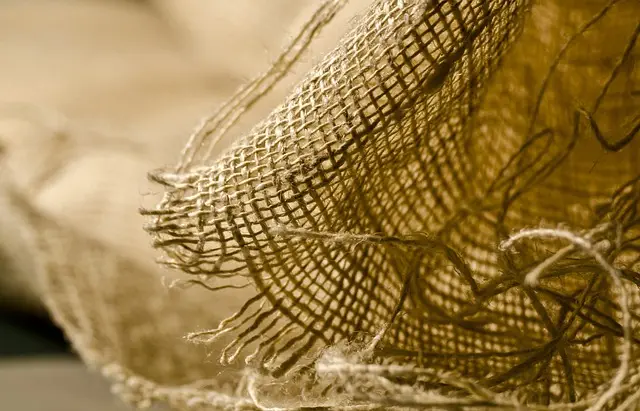Maeng Da Kratom, derived from the Mitragyna speciosa plant and commonly known as "Pimp Leaf" due to its strong effects, is a popular natural remedy for joint pain, celebrated for its high alkaloid content that includes mitragynine and 7-hydroxymitragynine. This strain is noted for its dual benefits of pain relief and mood enhancement without sedation, setting it apart from other kratom varieties. Maeng Da's therapeutic effects are believed to stem from its interaction with opioid receptors in the brain, which may aid in managing joint discomfort associated with conditions like arthritis and sports injuries. It is essential for users to be cautious and consult healthcare providers before using it, as interactions with other substances and varying regulatory statuses across regions can affect its safety and efficacy. Maeng Da Kratom can be consumed in various forms, including capsules, tea, or powder, offering versatility in how it's taken. It complements a holistic approach to joint pain management that includes lifestyle adjustments and should be integrated into one's health regimen only after professional advice is sought to ensure it aligns with your overall health plan.
Explore the natural pathways to joint pain relief with an in-depth look at Maeng Da Kratom, a botanical remedy that’s garnering attention for its potential analgesic properties. This article delves into the efficacy of Maeng Da Kratom, shedding light on its scientifically grounded effects on joint inflammation. Discover how this plant-based solution can be harmoniously integrated into a broader holistic approach to manage joint discomfort. What does Maeng Da mean in terms of pain relief? Join us as we uncover the answers and guide you through the integration of this traditional remedy into modern pain management practices.
- Unraveling Maeng Da Kratom: An Overview of Its Potential for Joint Pain Relief
- The Science Behind Maeng Da Kratom and Its Effects on Joint Inflammation
- Integrating Maeng Da Kratom into a Holistic Joint Pain Management Strategy
Unraveling Maeng Da Kratom: An Overview of Its Potential for Joint Pain Relief

Maeng Da Kratom, a strain derived from the leaves of Mitragyna speciosa, has garnered attention in natural health circles for its potential therapeutic properties, particularly in managing joint pain. What does Maeng Da mean? “Maeng Da” translates from Thai as “pimp hand,” which humorously alludes to the robust and invigorating effects associated with this particular kratom strain. It is often celebrated for its fine veins and elevated alkaloid content, which are believed to contribute to its efficacy in pain relief, including joint discomfort.
The leaves of Maeng Da Kratom contain a unique blend of alkaloids, primarily mitragynine and 7-hydroxymitragynine, both of which have been studied for their analgesic qualities. Users report that Maeng Da can offer a balanced effect, providing both pain relief and an uplifting mood without the sedative effects often associated with other kratom strains. Its fine powder is traditionally ingested either in capsule form or as a tea, and it’s particularly favored for its stimulating properties that can energize individuals while potentially easing the aches and pains associated with arthritis, sports injuries, and age-related joint wear. As with any supplement or medication, it is essential to consult healthcare professionals before incorporating Maeng Da Kratom into one’s wellness regimen, especially considering its potential interactions with other substances and its regulatory status in various regions.
The Science Behind Maeng Da Kratom and Its Effects on Joint Inflammation

Maeng Da Kratom, a strain derived from the Mitragyna speciosa tree native to Southeast Asia, has garnered attention for its potential analgesic and anti-inflammatory properties. The leaves of this particular strain are known for their dark green hue, which some attribute to a higher alkaloid content compared to other strains. Alkaloids such as mitragynine and 7-hydroxymitragynine are believed to interact with the body’s opioid receptors, providing pain relief. These compounds may also influence the central nervous system, leading to a decrease in inflammation markers, which can be particularly beneficial for individuals suffering from joint inflammation. The science behind Maeng Da Kratom’s effects on joint inflammation involves its impact on neurotransmitters like dopamine and serotonin, which may contribute to a reduction in pain perception. Furthermore, the anti-inflammatory properties are thought to be due to its ability to inhibit certain pro-inflammatory cytokines and enzymes in the body. Users report that Maeng Da not only alleviates pain but also improves their overall sense of well-being, which can be crucial for those coping with chronic joint conditions. It’s important to approach the use of Kratom with caution, as it can interact with other medications and has potential side effects; therefore, consulting a healthcare provider before incorporating it into a health regimen is advisable.
Integrating Maeng Da Kratom into a Holistic Joint Pain Management Strategy

Maeng Da Kratom, a strain derived from the Mitragyna speciosa tree native to Southeast Asia, has garnered attention in holistic joint pain management strategies. The term “Maeng Da” translates from Thai as “Pimp Leaf,” reflecting its potency and robust effects. This particular strain is celebrated for its unique alkaloid composition, which includes 7-hydroxymitragynine, a compound believed to contribute significantly to its analgesic properties. When integrating Maeng Da Kratom into a comprehensive joint pain relief approach, it’s crucial to consider dosage and frequency, as these factors can influence the efficacy and user experience.
Incorporating Maeng Da Kratom into daily routines involves careful planning and consideration of various factors, including individual body chemistry and tolerance levels. Users often report positive experiences with its pain-relieving effects, which can be attributed to its ability to interact with the opioid receptors in the brain, potentially providing relief from joint discomfort. This strain is versatile and can be consumed in various forms, such as capsules, tea, or powder, allowing for personalized administration tailored to individual preferences and needs. As part of a holistic strategy, Maeng Da Kratom complements other therapies like physical exercise, proper nutrition, and restorative practices, offering a multifaceted approach to managing joint pain. It’s important to consult with healthcare professionals before incorporating any new supplement into your regimen to ensure it aligns with your overall health goals and avoids potential interactions with medications.
In conclusion, the exploration of Maeng Da Kratom’s potential as a joint pain relief solution reveals a promising avenue for those seeking natural alternatives. The scientific underpinnings of its effects on joint inflammation, detailed in “The Science Behind Maeng Da Kratom and Its Effects on Joint Inflammation,” are complemented by practical advice for integrating it into a comprehensive pain management strategy as discussed in “Integrating Maeng Da Kratom into a Holistic Joint Pain Management Strategy.” What does Maeng Da mean in its native context offers insight into the origin and traditional use of this botanical, which aligns with contemporary research on its analgesic properties. As with any therapeutic approach, individual responses may vary, and it is advisable to consult healthcare professionals before incorporating Maeng Da Kratom into one’s health regimen. Nonetheless, the emerging evidence suggests that this natural compound could be a valuable component in managing joint pain discomfort.






